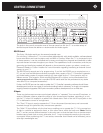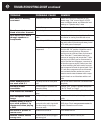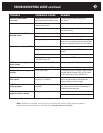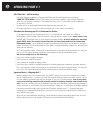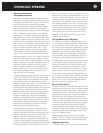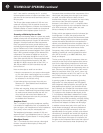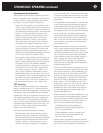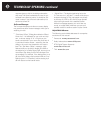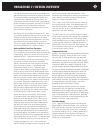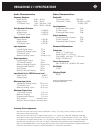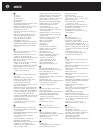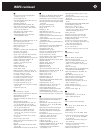
PARASOUND C 1 DESIGN OVERVIEW
63
The Halo By Parasound components are designed to
add extra distinction to Parasound’s 20-year reputation
for rock-solid reliability, amazing sound quality, and
unequaled value. Although built for the home, our
components have seen extensive use in professional
studios. Parasound equipment was used by Lucasfilm
in the production of two Star Wars movies (we
received screen credits for Episodes I and II) and by
other production companies.
Our design brief for the Halo By Parasound C 1 was
to produce a component that could serve as the cen-
terpiece for even the most complex home theater,
provide for future technical developments, and meet
the needs of the most critical listener and viewer.
Twenty-two highly talented design engineers on three
continents collaborated to fulfill that mission.
Audio and Video Circuit Path Topologies
Some things are best done in the digital domain, oth-
ers in the analog. Some situations call for extensive sig-
nal processing, others for none at all. The circuit path
topologies of the C 1 take these factors into account.
Signal processing, such as surround decoding, filter-
ing, and tone control, works best in the digital
domain, where even the most complex processing
won’t add noise, distortion, or phase anomalies.
Analog audio signals in the C 1 therefore pass
through a 24-bit, 96-kHz analog-to-digital (A/D) con-
verter at the input and a 24-bit, 96-kHz digital-to-ana-
log (D/A) converter after processing. Because analog
circuits can handle low-level signals with no loss of
effective resolution, volume control takes place entire-
ly in the analog domain. The analog volume and level-
trim controls, designed in collaboration with the C 1
design team, have lower noise and wider dynamic
range than any others in the world. And to ensure
that the volume adjustments will track perfectly
together for all channels, the volume-control stages
for all channels are under precise digital control.
Signals that require no processing, such as those
to the tape outputs, pass directly through the C 1,
entirely in the analog domain. There is also a purist
Bypass mode for the balanced analog input, which
sends the signal straight from input to balanced left
and right front output with no processing save the
volume control; the same can be accomplished for
unbalanced analog stereo signals by connecting them
to the left and right channels of the 7.1-channel input.
As insurance against any possible circuit interactions,
the balanced circuits are on a separate board, which is
disconnected from the rest of the C 1 in Bypass mode,
and the 7.1-channel input has its own volume control.
For bass management, the C 1 uses a patented
hybrid of analog and digital circuitry to optimize head-
room while reducing noise and distortion. It also
preserves bass coherence by reducing time-smearing
when channels with differing delay times are com-
bined into a single subwoofer output.
The C 1 has a total of 7.5 output channels, including
an extra subwoofer output, a low-passed output for
use with floor-shakers, and two programmable chan-
nels that can each be fed a user-selectable mix of
signals from the other channels.
The video side of the C 1 handles composite video,
S-video and component video signals. The component
video circuits, which have more than enough band-
width (300 MHz) for any of today’s high-definition TV
or video signals, are also on a separate board that
isolates them from the rest of the video circuitry. The
two component video inputs can be assigned to any
of the ten audio and A/V inputs.
Component Selection
Signals in the analog domain are handled by high-speed
Burr-Brown op amps, running at high current in pure
class-A mode, for linear performance and musicality.
The converters, chosen for their ultra-low jitter, flawless
performance and superb sound quality, are 24-bit, 96-kHz
codecs from AKM, long a leader in single-chip, multi-
channel, analog-to-digital and digital-to-analog converters.
The signal processor is Motorola’s Symphony DSP56367,
a 24-bit processor designed specifically for audio use.
With the ability to handle 150 million instructions per
second (150 mips), this DSP has enough processing
power to perform surround decoding, tone control, the
user interface, and more. The operation of this processor
is managed by the finest DSP engine in the world,
designed by Flextronics Design in Finland.
Other components include metal-film 1% resistors,
polypropylene and mica capacitors, and high-quality,
gold-plated input and output connectors. Muting is han-
dled by high-quality relays. The chassis is of heavy-gauge
steel. Circuit boards are of FR4 glass epoxy; some are
of four-layer construction, to ensure near-perfect ground
planes for minimum noise and distortion.
The Power Supply
The C 1 uses a high-energy switched-mode power
supply (SMPS). Extremely efficient, such power sup-
plies generate very little heat. This allows the entire
C 1 to run very cool, even when left on continually,
for extreme reliability. The C 1 employs additional LC
(inductive-capacitive) filtering after the filters con-
tained in the power supply for the utmost purity and
refinement of audio details.



